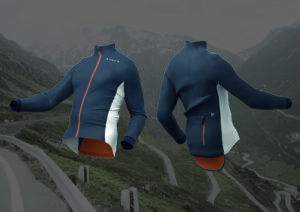
Sourcing sustainable performance sportswear fabrics involves considering several factors such as the materials and fibres used, production processes, location of the mill and source of fibre and certifications. Here are 10 easy to follow steps to help you source sustainable sportswear fabrics:
- Research Sustainable Performance Fabrics suitable for Activewear: Start by familiarising yourself with different sustainable fabric options by using search engines and also see what competitive brands are doing. Some popular choices for sportswear include organic cotton, recycled polyester, bamboo, hemp, Merino and Tencel. Learn about their sustainability features, performance characteristics, and environmental impacts. Download our guide here.
- Certifications: Look for fabrics that have been certified by reputable organisations such as the Global Organic Textile Standard (GOTS), the Global Recycled Standard (GRS), or the Bluesign® system. These certifications ensure that the fabric meets specific environmental and social criteria. When sourcing fabrics, make sure that the mills have up to date certificates and ask for hangers of qualities that are certified as not all fabrics a mill produce may carry a certification or qualify.
- Transparency: Evaluate the transparency of the fabric suppliers and manufacturers. Look for companies and mills that provide information about their supply chains, including the origin of raw materials, production processes, and labour conditions. Transparency is essential for ensuring sustainable practices throughout the supply chain. A fully transparent fabric mill should be able to provide copies of certificates as mentioned above.
- Recycled Materials: Select fabrics made from recycled materials such as recycled polyester or nylon. These fabrics are typically made from post-consumer plastic bottles or industrial waste, reducing the demand for virgin materials and minimising environmental impact. A lot of the recycled polyester and nylon is supplied from cleaning up our oceans, however a lot is also from digging up landfills. Cleaning both landfills and the ocean are good, however please be aware that you are still using petrochemicals and as such, these are still having an impact on the environment.
Washing garments made from recycled petrochemicals release tiny fibres into the ocean that cannot be collected and when they biodegrade, they release toxins into the soil.
- Explore Natural and Bio-based Fibres: Natural fibres like organic cotton, bamboo, merino and hemp are renewable and biodegradable. Additionally, bio-based fibres like Tencel (made from wood pulp) offer excellent performance properties and are produced using sustainable methods. When these fibres do biodegrade, they put back minerals into the soil and enrich it. They also degrade in months rather than decades like synthetics.
- Performance and Durability:Sportswear fabrics need to meet performance requirements such as moisture-wicking, breathability, and stretch. Ensure that the sustainable fabrics you consider can meet these performance standards and have good durability to withstand frequent use and washing. Think about the damage the fibres may do to the planet when they are washed and make sure the fibres degrade before they reach the sea or waterways or are harmless to the environment.
- Engage with Suppliers: Contact fabric suppliers and manufacturers who specialise in sustainable textiles. Share your requirements and sustainability goals, and inquire about their product offerings, certifications, and sustainability practices. Building a relationship with the suppliers can help you gain insights into their commitment to sustainability. Note that a lot of sustainable suppliers require higher MOQ’s than traditional petrochemical qualities so remember to make sure your requirements fit their production needs.
- Local or Regional Suppliers: Sourcing fabrics locally or regionally reduces the carbon footprint associated with transportation. Look for suppliers closer to your production facilities to minimise the environmental impact.
- Evaluate Cost and Scalability: Sustainable fabrics may have different price points compared to conventional materials. They are usually 10% more expensive on the whole, however some fibres such as merino wool or silk are far more expensive than petrochemicals.
Assess the cost implications and consider whether the fabrics are scalable for your production needs. While sustainable materials might be slightly more expensive, remember that investing in sustainability can lead to long-term benefits and loyal customers who buy into your brand values.
- Test and Iterate: Once you have identified potential fabric options, request fabric samples for testing and to produce samples from. Evaluate the performance, quality, and sustainability aspects of the materials. It may take some trial and error to find the right combination of sustainability, performance, and cost for your specific sportswear products.
By following these steps, you can source sustainable sportswear fabrics that align with your environmental and social values while maintaining the necessary performance characteristics for your products.
If you need more information on the different types of sustainable fabrics available, then download our guide here.
If you need contact information of fabric mills and companies that supply sustainable fabrics, then download our guide here.
If you want to discuss your sustainable requirements further, then please get in touch and see how we can help. We are huge advocates for sustainable sportswear and have a massive database of suitable fabrics, trims and components.




